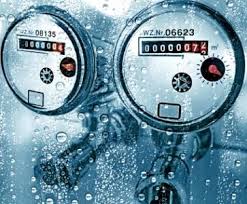
(from the Edmond Sun)
Peak-season water bills are stirring up a lot of questions for city consumers worried about how much they pay for city water. At the same time the City Council is looking at the possibility of smart meters in Edmond.
Best practices in technology allow consumers to monitor their energy usages faster than before, said Josh Moore, city councilman.
Customers using advanced metering infrastructure (smart meters) are able to look online the next day and see how much electricity they used the day before and learn how much water they used the day before, Moore said.
City of Edmond staff will be recommending smart meters to the Edmond City Council at an upcoming meeting, said Kris Neifing, who manages the city’s Water Resources Department. The city held a workshop on smart metering in 2016. According to the city manager’s office the next meeting date for the city council to consider smart metering has not been set.
“The AMI system will allow customers to track usage throughout the month instead of seeing the usage one time each month when the bill is calculated,” Moore said. “So just the speed of the data and of the reporting where it shows nationwide that basically it cuts back on energy usage, because if you’re seeing that you’re overusing then you’re more common to back off and/or to use energy at different times of the day when it’s not on peak times.”
Moore said it’s not in the interest of the City of Edmond to sell its customers more water or more electricity. It costs a lot of money for us to expand its infrastructure, he continued.
“We would rather Edmond citizens either save their money or shop in Edmond, or eat in Edmond and support our business owners in Edmond,” Moore explained.
Smart metering is overdue in Edmond, said Moore, who hopes the project is passed as soon as possible by the city council.
Neifing pointed out that while billing for water is based on actual amounts used each billing cycle after the meters are read, customers can also levelize (or average) their payments to spread the peak costs throughout the year but have the same total costs over a 12-month period.
“Water consumption is billed on an inclining block rate which means the more water that a customer uses the more the water will cost,” Neifing explained.
The first 10,000 gallons of water are billed at a lower rate, currently $6.68 per thousand gallons plus a base charge of $11. The next tier is 11,000 to 20,000 gallons is $7.72 per thousand gallons of usage, and the next tier of 21,000-plus gallons is $9.64 per thousand gallons. Neifing said this practice allows customers using less water to have a lower bill. Customers consuming more water during summer months pay for more of the city’s costs associated with peak infrastructure, Neifing added.
“The primary driver for inclining block rates is the cost of infrastructure that is idle 8-9 months out of the year,” Neifing said.
May and June of this year resulted in very wet conditions for residents. During these conditions, residents tend to have less water usage.
The average daily water production during May and June was about 8-10 million gallons per day. Edmond experienced dry weather in July. Arid conditions brought no relief for vegetation, so the city’s water production quickly increased to 20 million gallons per day — which was near peak capacity capabilities.
“We have a Capital Improvement Plan to expand our Water Treatment Plant and make many other improvements in order to make our system more robust both now and in the future,” Neifing said. “The cost of these improvements is over $350 million dollars and the primary driver is outdoor water usage.”
Neifing said that water rates have increased gradually during the last decade and will continue to increase incrementally in order to pay for improvements to the water system. Improvements are vital for increased production capabilities and to replace aging infrastructure such as old water lines. The average increase on the water bill has been in the 4-5% range each year instead of large increases in one year to allow customers to absorb the increased costs over many years rather than seeing dramatic changes which many on a fixed income could not absorb easily, Neifing said.
The average water bill in the winter is 6,000 gallons of usage for residential customers at a cost of $44.40. The rates for water are posted at www.edmondwater.com or on the Utility Customer Service page on the city’s website, www.edmondok.com.
CITY EXPLAINS BILLING
The City of Edmond explains how water billing costs may impact customers:
Did all customers go up?
From July to August billings, for residential customers:
• 16.4% had a lower bill
• 15.6% had the same bill
• 68.0% had a higher bill
From July to August billings, for non-residential customers:
• 26.4% had a lower bill
• 27.7% had the same bill
• 45.9% had a higher bill
How much did our customers use?
Residential August billings:
41.9% of our customers used between 0-6000 gallons
14.4% of our customers used between 7-10,000 gallons
12.2% of our customers used between 11-15,000 gallons
8.75% of our customers used between 16-20,000 gallons
7.1% of our customers used between 21-25,000 gallons
4.75% of our customers used between 26-30,000 gallons
8.1% of our customers used between 31-50,000 gallons
2.7% of our customers used over 51,000 gallons



